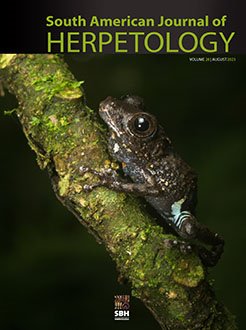We analyzed the spatial distribution of the narrow-range and threatened reptiles from the Pampas grassland, a region with high human influence in east-central Argentina. We used field-collected and museum specimens combined with high-resolution environmental variables to recognize common distributional patterns and the variables that best explain them, estimate the suitable habitat for each species, identify conservation priority areas, and finally propose management and conservation priorities related to the current protected areas. Distribution models diverged into two distributional patterns for the narrow-range species: suitable habitat for most species in highland grasslands of the montane environment, and suitable habitat for Liolaemus multimaculatus in the grassland of the coastal dunes. Growing degree-days was the most informative environmental variable for constructing the distribution models, followed by annual potential evapotranspiration, and temperature seasonality. We proposed priority areas on the basis of two different conservation algorithms: the additive benefit function, which favors the montane and sandy environments, prioritizing areas with high richness of narrow-range species, and the core-area zonation, which prioritizes the occurrence of all biodiversity features, further indicating fragmented areas in the surroundings with low human influence index, but lacking the studied species. Regardless of the algorithm used, our results showed that the existing protected areas in the region are inadequate to protect the narrow-range reptiles. Protecting at least 5% of the priority areas with higher conservation values and considering the cost of the human influence index, the protected areas represented only 12.75% of these priority areas. Therefore, we identified the main management strategies to increase the representativeness of priority areas. Our findings are largely consistent with previous reports in the Neotropical region, highlighting the need to assign a larger area for conservation purposes.
Analizamos la distribución espacial de los reptiles amenazados y de distribución reducida del pastizal Pampeano, una región con elevada influencia humana en el centro-este de la Argentina. Usamos ejemplares colectados en campo y de museos combinados con variables ambientales de alta resolución para reconocer patrones de distribución comunes y las variables que mejor los explican, estimar el hábitat adecuado para cada especie, identificar las áreas prioritarias de conservación y finalmente proporcionar una prioridad de conservación y manejo relacionada con las áreas protegidas actuales. Los modelos de distribución divergieron en dos patrones de distribución según las especies de distribución reducida: hábitat adecuado para la mayoría de las especies en los pastizales de altura del ambiente serrano, y hábitat adecuado para Liolaemus multimaculatus en los pastizales de las dunas costeras. El grado-días de desarrollo fue la variable ambiental más informativa para la construcción de los modelos de distribución, seguida de la evapotranspiración potencial anual y la estacionalidad de la temperatura. Propusimos áreas prioritarias basadas en dos algoritmos de conservación diferentes: la función de beneficio aditivo, que favorece los ambientes serranos y de dunas, priorizando áreas con una alta riqueza de especies de distribución reducida, y la zonificación del área núcleo, que prioriza la ocurrencia de todas las características de la biodiversidad, indicando además áreas fragmentadas en los alrededores con bajo índice de influencia humana, pero que carecen de las especies estudiadas. Independientemente del algoritmo utilizado, nuestros resultados mostraron que las áreas protegidas existentes en la región no son suficientes para proteger a los reptiles de distribución reducida. Protegiendo al menos el 5% de las áreas prioritarias con mayores valores de conservación, y considerando el costo del índice de influencia humana, las áreas protegidas representaron solo el 12,75% de estas áreas prioritarias. Por lo tanto, identificamos las principales estrategias de manejo para aumentar la representatividad de las áreas prioritarias obtenidas. Nuestros hallazgos son en gran parte consistentes con los estudios previos en la región Neotropical, destacando la necesidad de asignar un área más grande para propósitos de conservación.





